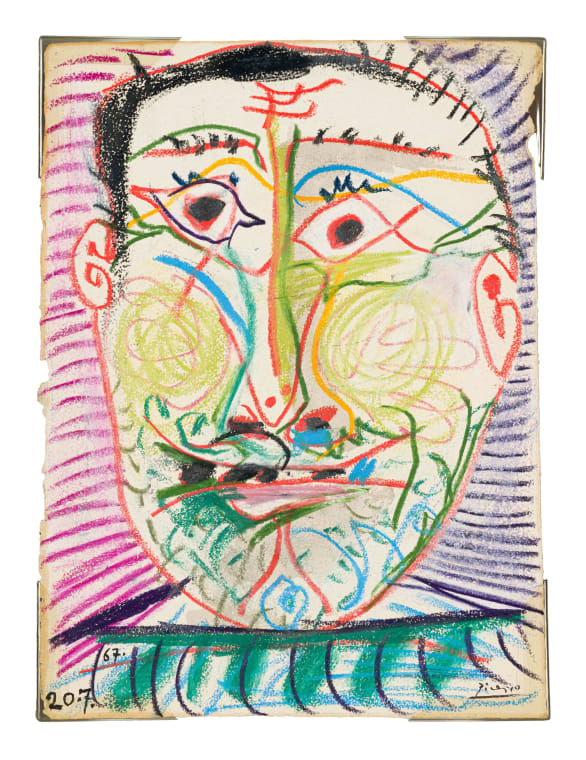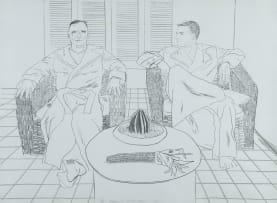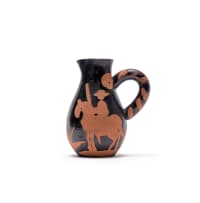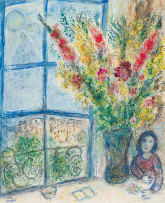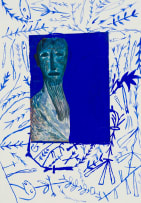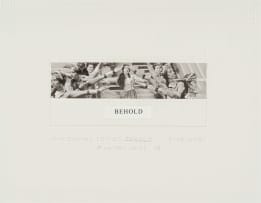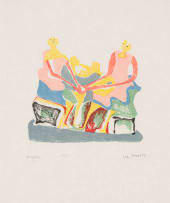The International Sale
Live Virtual Auction, 22 October 2024
Evening Sale
Incl. Buyer's Premium & VAT
About this Item
signed and dated 20.7.67; signed and dated 20.7.67 on the verso
Notes
Accompanied by a Dennis Hotz Fine Art valuation certificate, dated 18 October 1989, inscribed with the artist's name, the title, date and medium.
Accompanied by a copy of a Michael Imerman certificate of authenticity signed by Michael Imerman, dated 24/10/98, inscribed with the artist's name, the date and medium.
The present lot, dated 20.07.67 and signed on both sides, was likely executed at Chateau Vauvenargues, in Mougins in South of France. 1967 was the year that Picasso lost his studio in Paris on the Rue des Grands-Augustins where he had painted Guernica (1937). That year, Roland Penrose organised a Picasso exhibition at the Tate Gallery in London, which later moved to the Museum of Modern Art in New York. Picasso's drawings from that period serve as evidence that he sketched almost daily while working on large-scale pieces such as The Kiss (1967) and a series of nudes. He also installed a large steel sculpture for the Chicago Civic Centre that year.
Picasso therefore drew almost as effortlessly as he breathed. Observing his drawing practice over a lifetime, reveals that he drew with the skill of Raphael and the old masters, and equally challenged the notions of optical correctness, creating the radical conventions of Cubism. Yet, later, his drawing unleashed a directness and an uninhibitedness that characterises the latter part of his career.
In the present lot, there is a distinct difference between the two drawings done on the same day, not only in the choice of media but also in his approach to the subject. The heads exude very different characteristics. The tonal brush and ink drawing of a bearded man has direct allusions to the type of figure to be seen as far back as the 1930s in Picasso's etchings in the Vollard suite. Here the brush mark has a fluency as it coils across the page until the ink runs out. Soft tonalities are brushed into the face while other marks define the depth of the open mouth and the irregular placement of the teeth. The concentric marks of the eyes are simultaneously
piercing and quizzical while the calligraphic raised eyebrows are scrawled across the forehead. The nose is somewhat phallic, and the mouth gesture seems more ironic than a smile. Dotted stubblelike marks define the upper lip, creating a striking contrast with the fluid, swirling lines that define the curly beard.
Picasso is the master of evoking much with so little, here approximately 37 to 40 marks and a series of jabbed points for the bristled upper lip evoke the intense presence of satyr-like man and of Picasso himself. As if that were not enough, a large date - 20.7.67 - appears in the upper register of the drawing and is completed by
Picasso's typical underlined signature on top.
The recto, done in wax crayon, is radically different, all the fluid arabesque-like marks are gone, and replaced by a brusqueness and direct urgency of mark. In his use of wax crayon, the obvious association is to children's drawing and particularly to their early uninhibitedness to draw what they feel and think, a trait that Picasso relished. The shape of the head, the ears, the eyes and nose are all initially simply outlined in red. Thereafter, Picasso 'colours in' the cheeks rendered in light green, the lower face and chin in dark green and blue, and the curious, double nostrils flare in crimson. Two red lines also cursorily define the mouth and lips, and the darkened mouth reveals an unprepossessing arrangement of teeth.
The 'portrait' evokes a dark-haired man with a distinctly surprised demeanour, created firstly by the staring pupils in quick drawn eyes and then by the graphic radiance of the pink and purple lines which emanate from his head.
The intimacy of the drawings speak touchingly to a personal moment of drawing unselfconsciously for the sheer pleasure of it, leaving a trace of Picasso's extraordinary capacity to explore playfully yet seriously.
-Karel Nel
Provenance
Christie's, New York, 11 May 1989, lot 219.
Nedbank South Africa, 1996.
Michael Imerman, 1996.
Private Collection, Johannesburg, 1998.
Literature
Charles Feld (1969) Picasso - Dessins 27.3.66 - 15.3.68, Paris: Cercle d'Art, illustrated as no. 236.
Christian Zervos (1973) Pablo Picasso, Paris: Cahiers d' Art, vol. 27, recto illustrated on page 24 as no. 78 and verso illustrated on page 28 as no. 85.
The Picasso Project (2002) Picasso's Paintings, Watercolours, Drawings and Sculpture. The Sixties II 1964 - 1967, San Francisco: Alan Wofsy Fine Arts, illustrated on page 374 as no. 67.
